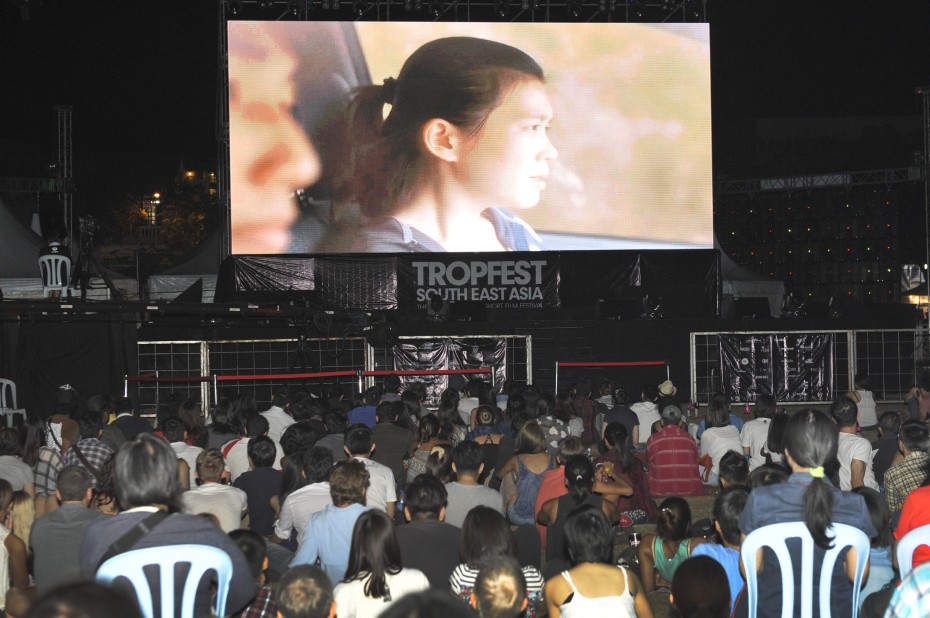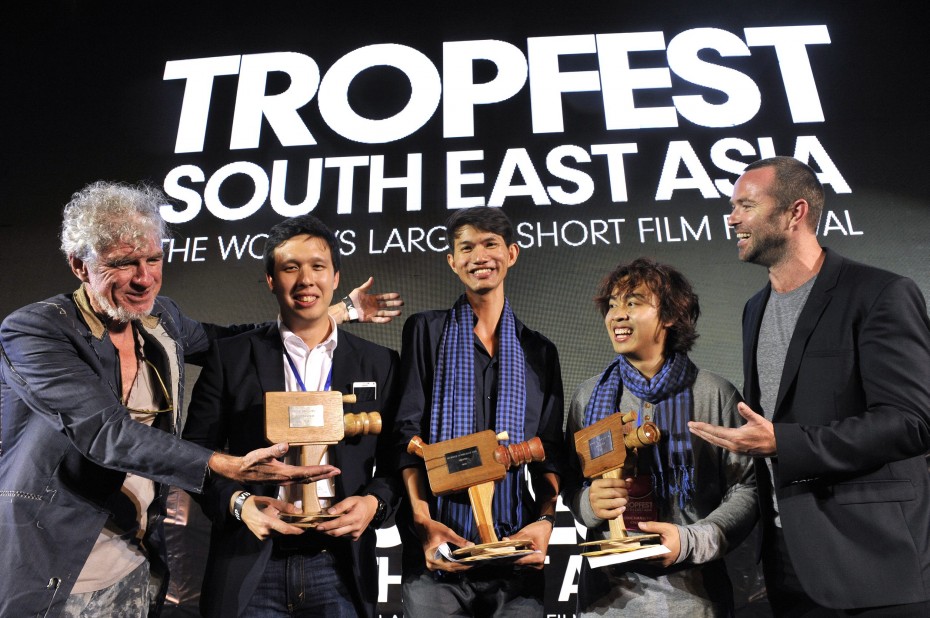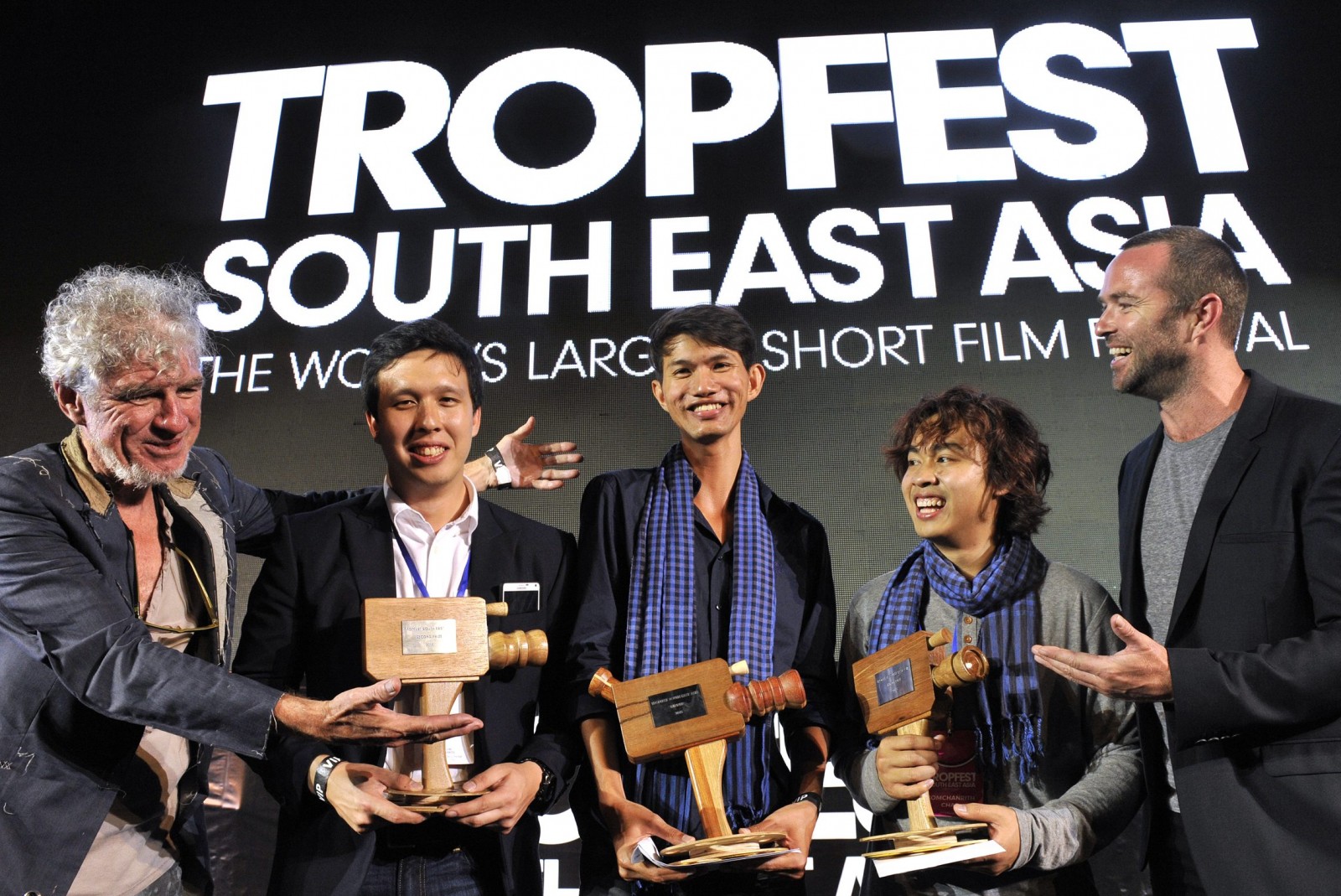By CLARISSA SAY
alltherage@thestar.com.my
I think I’m going to throw up,” said Jake Soriano to fellow Tropfest South-East Asia finalist and high school mate Inshallah Montero.
Another short film by one of the 16 finalists from the region had just finished screening, and spotlights were bursting throughout the festival field at the Esplanade, George Town, signalling the intermission. Soriano, however, was in no mood to party just yet.
He and Montero were among the finalists at Tropfest SEA, the region’s largest short film festival, and they were in excellent company with three other finalists from the Philippines, five from Cambodia, four from Malaysia and one each from Singapore and Vietnam.
The 16 represent a promising new generation of young filmmakers in the region, many of whom don’t always get the recognition or support they deserve. Tropfest SEA, thankfully, is starting to change all that.
But it all begins with some youthful determination. Soriano’s seat in the finalists’ section could very easily have been taken up by someone else. He decided to enter the competition just days before the deadline, and did his filming and post-production all on deadline day itself, filming from 6am and editing through the night.
He uploaded his film with just two hours to spare, and never expected to be one of the chosen few.
Instead, the young advertising director went on to place second in front of this year’s live judging panel, which included legendary cinematographer Christopher Doyle and the lead actor of 300: Rise of An Empire, Sullivan Stapleton.
But the real spotlight went to last year’s first-runner-up, Polen Ly, 25, from Cambodia, who won over the judges with his film Colourful Knots, making him the second Cambodian to raise the winner’s trophy in a festival which only debuted the year before.
Ly walked away with a US$12,000 (RM43,200) cash prize courtesy of Yayasan Sime Darby, as well as a money-can’t-buy industry immersion trip to Los Angeles, sponsored by the Motion Picture Association (MPA) to schmooze and rub shoulders with the industry’s top filmmakers, screenwriters, directors and actors.
Tropfest could not have picked a better representative of young South-East Asian filmmakers than Ly, who spoke passionately about the role of film in bringing change to the region.
He said: “I would tell every filmmaker, regardless of age or race, that they need to have the courage to tell their stories, because film is about freedom. And if they don’t have the freedom to do that, that’s even more reason to stand up and tell those stories.”

The crowd watching the screening of films during the finale of Tropfest South East Asia 2015 at the Esplanade.
Out at SEA
“I am really happy to join the competition again and I didn’t expect to win because the other films were really good too,” said Ly when receiving his prize. Ly had joined the year before and placed second with his short, Duetto.
Fellow Cambodian Somchanrith Chap, 23, won the third prize for his western-inspired short, A Fistful of Pebbles. A remarkable run of accomplishments, considering that in Cambodia, one does not simply sign up to study film.
“There are no film schools in Cambodia,” said Ly during an interview with R.AGE. It was something the other Cambodian finalists at the four-day festival spoke about as well.
Although there is a small film and media industry in Cambodia, those who want to pursue a formal education have no choice but to seek it elsewhere, like Sokharo Hang, 22, director of Bubble, who took a course on filmmaking in neighbouring country Thailand. Besides that, the only other option is to study something remotely similar, and apply for a job in the industry, picking things up along the way.
Because of that, said Hang, there’s a huge disparity in content between indie films and mainstream films in his country.
According to him, almost everything shown on screens in Cambodia revolve around either romance or action, with recycled plots, one-dimensional characters, and formulaic story-lines – because they sell. He said producers are a lot less eager to invest in independent films because the risk is too high, and the other finalists agreed.
“Honestly, I don’t believe the Cambodian film industry is at that level yet,” said Chap, who admitted to struggling with making his films “Cambodian enough”, while remaining true to his original visions.
Doreen Soon, a Singaporean from one of the Malaysian teams goes even further to say: “We still have a long way to go towards making our films more Asian-friendly, you know? I mean, our own target audience isn’t even watching them, let alone other Asian countries. They’re more into watching blockbusters, or Hollywood films.”
If one were honest, the same could be said about Malaysia’s film industry.
“For the longest time, all our films were about gangsters, ghosts, comedy or love. We follow this recipe because that seems to be what makes the most money at the box office,” said Joe Sidek, the founder of Tropfest SEA.
“Independent films are very important because they break the stronghold that Hollywood builds, because they’re not made to sell, they’re made to tell a story.”
![Ly's advice to all aspiring filmmakers: "I would tell every filmmaker, regardless [of] age, race, they need to have the courage to tell their story because film is about freedom. And I think if they don't have the freedom to do that, that's even more reason to stand up and tell it." - Photo: Tropfest SEA](https://rage.com.my/wp-content/uploads/2015/02/005-001-70-930x620.jpg)
Ly’s advice to all aspiring filmmakers: “I would tell every filmmaker, regardless [of] age, race, they need to have the courage to tell their story because film is about freedom. And I think if they don’t have the freedom to do that, that’s even more reason to stand up and tell it.” – Photo: Tropfest SEA
Things are looking up, however, for the Philippines, where the independent arts scene is on the rise.
“It’s a growing industry with a lot of young and undiscovered talent,” Soriano said. “We have plenty of opportunities to develop our film-making skills and we have many venues such as local film festivals to showcase our work.”
In 2013, first-time Filipino director Hannah Espia, 27, broke another barrier with the premiere of her film, Transit – a one hour movie following the hardships of Filipinos working and living illegally in Israel. The movie won nine awards and was selected as the Philippines’ entry for the 86th Academy Awards, though it wasn’t nominated.
Espia was at Tropfest SEA to talk about her film and independent filmmaking.
“I think it’s an exciting time for filmmakers,” she said. “It’s so vibrant. It’s full of young people, it’s full of all these new ideas!”
Espia debuted Transit at the Cinemalaya Film Festival 2013, where she met Sidek and, unbeknownst to her (until 2 years later), inspired him to bring Tropfest to South-East Asia.

Malaysia’s sweetheart, Dasha Logan, looked practically radiant in a flowing chiffon gown as she sang in the starter performance. – Photo: Tropfest SEA
Investing in talent
As the judges awarded Ly his winner’s trophy, the entire field cheered for him and the other finalists for having made it so far. While Ly was on stage celebrating amidst the fanfare, far away in the crowd, a man dipped his head and started crying into his hands.
His name is Nick Cucinella, 36, an executive producer from the United States whose eye was caught by Ly’s Tropfest film the year before.
“I saw that his style of art was different, and I saw that his film needed funding, and someone had to back that,” he said.
He decided then to be Ly’s executive producer and to fund his film for Tropfest SEA in 2015.
“The festival is really just a meeting place,” said Tropfest SEA judge and renowned cinematographer Christopher Doyle during an interview with R.AGE. “It’s lonely, you know? It’s difficult to do what we do. It’s difficult to sustain the energy. You need encouragement from other people, you need a sense of community. You need to feel that what you’re doing, maybe other people can appreciate, or support, or enjoy in some way.”
Unlike Hollywood blockbusters, independent shorts come with tiny budgets and little-to-no earnings, with investments that span from US$30 (RM107) to US$5,000 (RM17,900), money that’s rarely recouped.
So why go through so much for so little?
“It’s the questions that matter,” Doyle said. “The questions are the films. That’s what the kids from all these countries have brought to us today. The films aren’t an answer, they’re just a support for the question – which is wonderful! Because now they’re sharing the questions amongst themselves.”
His advice to aspiring filmmakers?
“If you don’t have any money, make do with what you have. If you have a phone, you can make a film. Don’t wait for Hollywood or the government to tell you if they like your idea.
“Actually, it’s probably better that they don’t like your idea because then it’s your idea, and perhaps it’s something so special that they don’t know what to do with it.”
John Polson, the founder of Tropfest, congratulated the finalists in a video message, and announced that the signature item for Tropfest SEA 2016 is “Switch”.
All entries for Tropfest SEA 2016 must include this item, but how the filmmakers interpret the meaning of the item, we’ll just have to wait till 2016 to find out.
One thing we can be pretty sure about, though, is that with the passion and talent on display this year, you can bet they’ll blow our socks off.

Tropfest South Eash Asia 2015 champion Polen Ly (middle), runner up Jake Soriano (2nd left) and third placed Somchanrith Chap (2nd right), joined by renowned cinematographer Christopher Doyle (left) and actor Sullivan Stapleton (right).
To view the 16 Tropfest SEA finalists’ films online – and to vote for your favourite – go to www.viddsee.com/tropfestsea2015.







Tell us what you think!